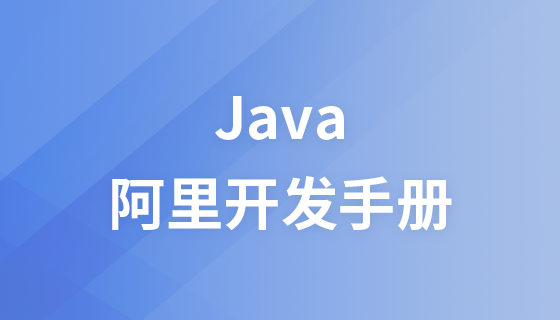java基礎專欄今天介紹超詳細的JVM反射原理技術點總結哦。

1,JAVA反射機制是在運行狀態中
#對於任意一個類,都能夠知道這個類別的所有屬性和方法;
對於任意一個對象,都能夠調用它的任意一個方法和屬性;
這種動態獲取的資訊以及動態呼叫物件的方法的功能稱為java語言的反射機制。
#(如果屬性是private,則正常情況下方是不允許外界操作屬性值,這裡可以用Field類別的setAccessible(true)方法,暫時開啟操作的權限)
Class.forName("com.my.reflectTest").newInstance()复制代码 @CallerSensitive
public static Class<?> forName(String className)
throws ClassNotFoundException {
// 先通过反射,获取调用进来的类信息,从而获取当前的 classLoader
Class<?> caller = Reflection.getCallerClass();
// 调用native方法进行获取class信息
return forName0(className, true, ClassLoader.getClassLoader(caller), caller);
}复制代码// java.lang.ClassLoader
protected Class<?> loadClass(String name, boolean resolve)
throws ClassNotFoundException
{
// 先获取锁
synchronized (getClassLoadingLock(name)) {
// First, check if the class has already been loaded
// 如果已经加载了的话,就不用再加载了
Class<?> c = findLoadedClass(name);
if (c == null) {
long t0 = System.nanoTime();
try {
// 双亲委托加载
if (parent != null) {
c = parent.loadClass(name, false);
} else {
c = findBootstrapClassOrNull(name);
}
} catch (ClassNotFoundException e) {
// ClassNotFoundException thrown if class not found
// from the non-null parent class loader
}
// 父类没有加载到时,再自己加载
if (c == null) {
// If still not found, then invoke findClass in order
// to find the class.
long t1 = System.nanoTime();
c = findClass(name);
// this is the defining class loader; record the stats
sun.misc.PerfCounter.getParentDelegationTime().addTime(t1 - t0);
sun.misc.PerfCounter.getFindClassTime().addElapsedTimeFrom(t1);
sun.misc.PerfCounter.getFindClasses().increment();
}
}
if (resolve) {
resolveClass(c);
}
return c;
}
}
protected Object getClassLoadingLock(String className) {
Object lock = this;
if (parallelLockMap != null) {
// 使用 ConcurrentHashMap来保存锁
Object newLock = new Object();
lock = parallelLockMap.putIfAbsent(className, newLock);
if (lock == null) {
lock = newLock;
}
}
return lock;
}
protected final Class<?> findLoadedClass(String name) {
if (!checkName(name))
return null;
return findLoadedClass0(name);
}复制代码newInstance() 其实相当于调用类的无参构造函数,主要做了三件事复制代码
// 首先肯定是 Class.newInstance
@CallerSensitive
public T newInstance()
throws InstantiationException, IllegalAccessException
{
if (System.getSecurityManager() != null) {
checkMemberAccess(Member.PUBLIC, Reflection.getCallerClass(), false);
}
// NOTE: the following code may not be strictly correct under
// the current Java memory model.
// Constructor lookup
// newInstance() 其实相当于调用类的无参构造函数,所以,首先要找到其无参构造器
if (cachedConstructor == null) {
if (this == Class.class) {
// 不允许调用 Class 的 newInstance() 方法
throw new IllegalAccessException(
"Can not call newInstance() on the Class for java.lang.Class"
);
}
try {
// 获取无参构造器
Class<?>[] empty = {};
final Constructor<T> c = getConstructor0(empty, Member.DECLARED);
// Disable accessibility checks on the constructor
// since we have to do the security check here anyway
// (the stack depth is wrong for the Constructor's
// security check to work)
java.security.AccessController.doPrivileged(
new java.security.PrivilegedAction<Void>() {
public Void run() {
c.setAccessible(true);
return null;
}
});
cachedConstructor = c;
} catch (NoSuchMethodException e) {
throw (InstantiationException)
new InstantiationException(getName()).initCause(e);
}
}
Constructor<T> tmpConstructor = cachedConstructor;
// Security check (same as in java.lang.reflect.Constructor)
int modifiers = tmpConstructor.getModifiers();
if (!Reflection.quickCheckMemberAccess(this, modifiers)) {
Class<?> caller = Reflection.getCallerClass();
if (newInstanceCallerCache != caller) {
Reflection.ensureMemberAccess(caller, this, null, modifiers);
newInstanceCallerCache = caller;
}
}
// Run constructor
try {
// 调用无参构造器
return tmpConstructor.newInstance((Object[])null);
} catch (InvocationTargetException e) {
Unsafe.getUnsafe().throwException(e.getTargetException());
// Not reached
return null;
}
}复制代码private Constructor<T> getConstructor0(Class<?>[] parameterTypes,
int which) throws NoSuchMethodException
{
// 获取所有构造器
Constructor<T>[] constructors = privateGetDeclaredConstructors((which == Member.PUBLIC));
for (Constructor<T> constructor : constructors) {
if (arrayContentsEq(parameterTypes,
constructor.getParameterTypes())) {
return getReflectionFactory().copyConstructor(constructor);
}
}
throw new NoSuchMethodException(getName() + ".<init>" + argumentTypesToString(parameterTypes));
}复制代码5. privateGetDeclaredConstructors(), 取得所有的建構器主要步驟;
// 获取当前类所有的构造方法,通过jvm或者缓存
// Returns an array of "root" constructors. These Constructor
// objects must NOT be propagated to the outside world, but must
// instead be copied via ReflectionFactory.copyConstructor.
private Constructor<T>[] privateGetDeclaredConstructors(boolean publicOnly) {
checkInitted();
Constructor<T>[] res;
// 调用 reflectionData(), 获取保存的信息,使用软引用保存,从而使内存不够可以回收
ReflectionData<T> rd = reflectionData();
if (rd != null) {
res = publicOnly ? rd.publicConstructors : rd.declaredConstructors;
// 存在缓存,则直接返回
if (res != null) return res;
}
// No cached value available; request value from VM
if (isInterface()) {
@SuppressWarnings("unchecked")
Constructor<T>[] temporaryRes = (Constructor<T>[]) new Constructor<?>[0];
res = temporaryRes;
} else {
// 使用native方法从jvm获取构造器
res = getDeclaredConstructors0(publicOnly);
}
if (rd != null) {
// 最后,将从jvm中读取的内容,存入缓存
if (publicOnly) {
rd.publicConstructors = res;
} else {
rd.declaredConstructors = res;
}
}
return res;
}
// Lazily create and cache ReflectionData
private ReflectionData<T> reflectionData() {
SoftReference<ReflectionData<T>> reflectionData = this.reflectionData;
int classRedefinedCount = this.classRedefinedCount;
ReflectionData<T> rd;
if (useCaches &&
reflectionData != null &&
(rd = reflectionData.get()) != null &&
rd.redefinedCount == classRedefinedCount) {
return rd;
}
// else no SoftReference or cleared SoftReference or stale ReflectionData
// -> create and replace new instance
return newReflectionData(reflectionData, classRedefinedCount);
}
// 新创建缓存,保存反射信息
private ReflectionData<T> newReflectionData(SoftReference<ReflectionData<T>> oldReflectionData,
int classRedefinedCount) {
if (!useCaches) return null;
// 使用cas保证更新的线程安全性,所以反射是保证线程安全的
while (true) {
ReflectionData<T> rd = new ReflectionData<>(classRedefinedCount);
// try to CAS it...
if (Atomic.casReflectionData(this, oldReflectionData, new SoftReference<>(rd))) {
return rd;
}
// 先使用CAS更新,如果更新成功,则立即返回,否则测查当前已被其他线程更新的情况,如果和自己想要更新的状态一致,则也算是成功了
oldReflectionData = this.reflectionData;
classRedefinedCount = this.classRedefinedCount;
if (oldReflectionData != null &&
(rd = oldReflectionData.get()) != null &&
rd.redefinedCount == classRedefinedCount) {
return rd;
}
}
}复制代码另外,使用relactionData() 進行快取保存;ReflectionData 的資料結構如下!
// reflection data that might get invalidated when JVM TI RedefineClasses() is called
private static class ReflectionData<T> {
volatile Field[] declaredFields;
volatile Field[] publicFields;
volatile Method[] declaredMethods;
volatile Method[] publicMethods;
volatile Constructor<T>[] declaredConstructors;
volatile Constructor<T>[] publicConstructors;
// Intermediate results for getFields and getMethods
volatile Field[] declaredPublicFields;
volatile Method[] declaredPublicMethods;
volatile Class<?>[] interfaces;
// Value of classRedefinedCount when we created this ReflectionData instance
final int redefinedCount;
ReflectionData(int redefinedCount) {
this.redefinedCount = redefinedCount;
}
}复制代码6.透過上面,取得到 Constructor 了!接下來就只要呼叫其對應建構器的 newInstance(),也就是回傳實例了!
// return tmpConstructor.newInstance((Object[])null);
// java.lang.reflect.Constructor
@CallerSensitive
public T newInstance(Object ... initargs)
throws InstantiationException, IllegalAccessException,
IllegalArgumentException, InvocationTargetException
{
if (!override) {
if (!Reflection.quickCheckMemberAccess(clazz, modifiers)) {
Class<?> caller = Reflection.getCallerClass();
checkAccess(caller, clazz, null, modifiers);
}
}
if ((clazz.getModifiers() & Modifier.ENUM) != 0)
throw new IllegalArgumentException("Cannot reflectively create enum objects");
ConstructorAccessor ca = constructorAccessor; // read volatile
if (ca == null) {
ca = acquireConstructorAccessor();
}
@SuppressWarnings("unchecked")
T inst = (T) ca.newInstance(initargs);
return inst;
}
// sun.reflect.DelegatingConstructorAccessorImpl
public Object newInstance(Object[] args)
throws InstantiationException,
IllegalArgumentException,
InvocationTargetException
{
return delegate.newInstance(args);
}
// sun.reflect.NativeConstructorAccessorImpl
public Object newInstance(Object[] args)
throws InstantiationException,
IllegalArgumentException,
InvocationTargetException
{
// We can't inflate a constructor belonging to a vm-anonymous class
// because that kind of class can't be referred to by name, hence can't
// be found from the generated bytecode.
if (++numInvocations > ReflectionFactory.inflationThreshold()
&& !ReflectUtil.isVMAnonymousClass(c.getDeclaringClass())) {
ConstructorAccessorImpl acc = (ConstructorAccessorImpl)
new MethodAccessorGenerator().
generateConstructor(c.getDeclaringClass(),
c.getParameterTypes(),
c.getExceptionTypes(),
c.getModifiers());
parent.setDelegate(acc);
}
// 调用native方法,进行调用 constructor
return newInstance0(c, args);
}复制代码java基礎
以上是超詳細的JVM反射原理技術點總結哦~的詳細內容。更多資訊請關注PHP中文網其他相關文章!



